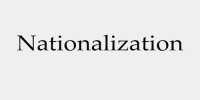It is hard to discuss Automattic without mentioning remote work. In this field, the firm is a leader and innovator: It has been very remote since 2005, and with 1,700 employees, it helped to demonstrate that a remote working culture could scale. However, the term “remote” now carries a different connotation than it had two years ago. Companies that never intended to work remotely have transferred millions of employees online since COVID-19 began. Employers scrambled to recreate actual offices within virtual meeting rooms, resulting in a 30-x increase in Zoom’s video conference minutes. According to early research, productivity suffered as a result.
Perhaps this is why Automattic refuses to use the term “remote.” Instead of using phrases like “distributed” and “asynchronous,” its leaders utilize terms like “distributed” and “asynchronous.” There is no online equivalent to an office, and Automattic does not even need employees to recognize one other is faces. Automattic’s business strategy not based on remote work in the least; instead, it is about how the organization organized, from the top down, from management to communication to the hiring process.
While organizing one of the interviews for this post, I got a glimpse into how Automattic differs from other businesses. Finding a decent time with interviewers usually entails sifting through a packed calendar for the few minutes that remain. During the week, a busy executive could have two or three vacancies, with every other slot filled.
Instead, I saw a huge free calendar when Monica Ohara, chief marketing officer of WordPress.com, provided me her Calendly link. Ohara did not look to be working very hard. She giggled when I inquired about it.
P2, a WordPress upgrade that Automattic introduced in August 2020 at the height of the pandemic and provides as a premium service is Automattic’s substitute for meetings and most office cooperation.
A P2 post resembles a blog post in appearance, with threaded comments, the option to follow responses, and a Like button. Employees may use the company’s P2 instance to discuss anything with faraway colleagues — for example, a developer in the United States who wishes to share something with a designer in South Africa who is sleeping now. Anyone else who might be interested can locate the same content through a search or the platform is numerous discovery capabilities.
Documentation is king, even if it includes information that would kept buried in other firms. “You must be completely transparent. Automattic’s creator and CEO, Matt Mullenweg, shares what he’s working on. Mark Davies, Automattic’s CFO, who formerly worked at smart home platform Vivint, a far more traditional firm, stated, “I post what I’m working on.” “When I initially arrived, I called a board meeting and told them, ‘Let’s get to work.’ ‘No way, you have to show the board deck and the choices,’ they responded. “You’ve got to be kidding me!” I said.
At Automattic, P2 is not the only way to communicate; the firm also employs applications like Slack and Jira. Despite this, all of the company’s products have a similar thread of asynchronicity: you have colleagues all over the world, so do not anticipate a response right away. “You’d think things would go a little slower here, but they don’t.” I believe there is also a preconception in offices that you must be present in person. When they might have written an email, people are storing things for their one-on-one or meeting,” said Ohara.
“I’ll frequently wake up here and discover there’s a lot going on in Europe that I need to catch up on, rather than us having to wait a week or two for a conference room.” It saves time to document everything and allow employees to consume only what they require. “I spend a lot less time listening and sitting in reviews and a lot more time speaking,” Davies said.
















